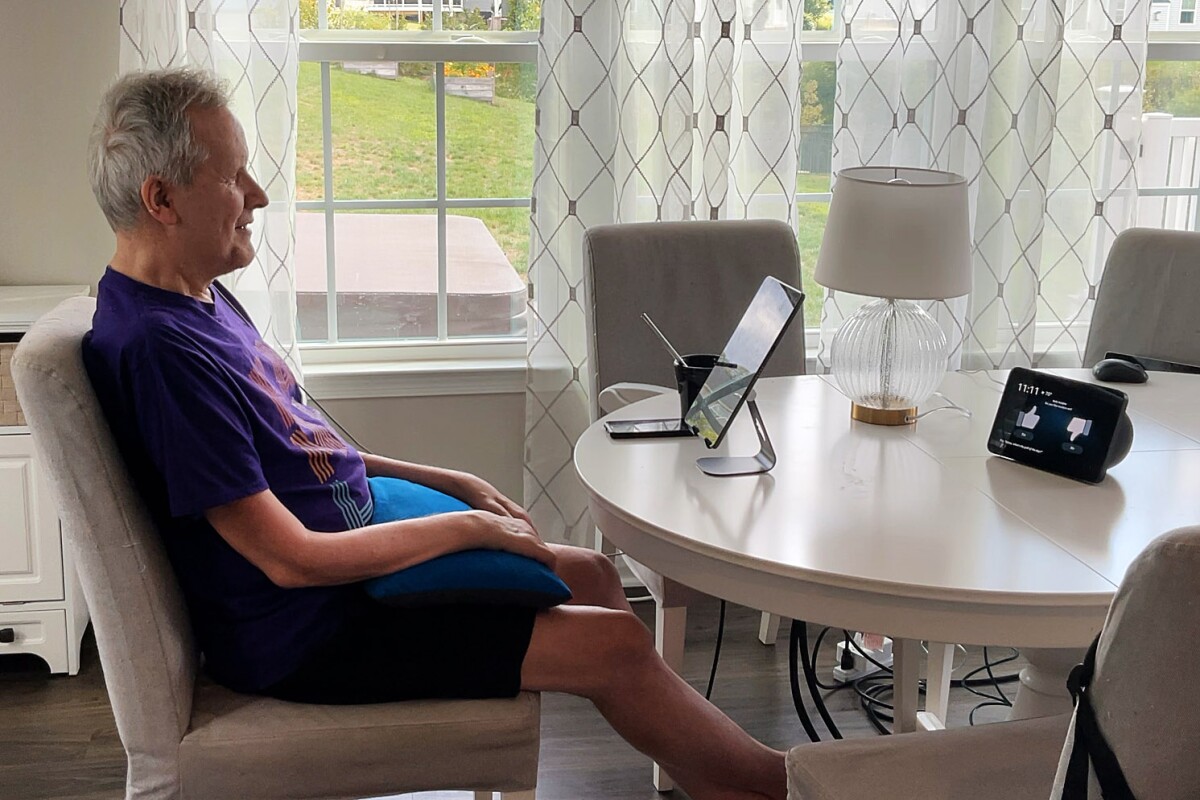Neuralink Rival Provides a Surgery-Free Way to Control Smart Homes with Thoughts

Synchron
Neurotech company Synchron has recently achieved significant progress. It has announced that a trial participant used its brain-computer interface (BCI) to control his home by turning on lights, checking who was at the door, and selecting TV content—all without using his hands or voice commands.
Synchron’s interface translates his thoughts into commands sent to Amazon’s Alexa service, which is configured on his tablet and linked to his smart home devices. The trial participant, who has amyotrophic lateral sclerosis (ALS) and is unable to use his hands, can navigate through options displayed on the tablet simply by thinking about them.
‘Stentrode’ Electrodes Detect Motor Intent for Thought-Controlled Interface and Alexa Actions
A ‘Stentrode’ implanted in a blood vessel on the brain’s surface contains electrodes that sense motor intent. The participant uses his thoughts to choose which tiles to press on the interface and control actions through Alexa. You can see him using the system in the video below.
Synchron discussed this potential application of its technology in an interview last year, so it’s exciting to see it come to fruition.
“Synchron’s BCI is closing the gap between neurotechnology and consumer technology, allowing people with paralysis to regain control of their surroundings,” said Tom Oxley, Synchron’s CEO and founder. “While many smart home systems depend on voice or touch, we are sending control signals directly from the brain, eliminating the need for these inputs.”
In comparison to Neuralink, Synchron has a significant advantage: its BCI can be implanted without opening the skull, and it can be performed by a broader range of clinics.
Self-Expanding Stent Delivers Electrodes Indefinitely via Jugular Vein
Instead, Synchron uses a self-expanding stent with embedded electrodes, which is delivered to the brain’s surface through the jugular vein. The company claims that this implant can remain safely in place indefinitely, unlike some FDA-approved trial BCIs that must be removed after a short time.
Synchron has had several trial participants test its technology, noting that 10 individuals were fitted with Stentrodes last year. In contrast, Neuralink announced just last month that it had implanted its BCI in a second participant.
In terms of capabilities, Neuralink’s approach is more ambitious, featuring 1,024 electrodes to capture a broad range of brain signals for potentially more complex actions. This has allowed its first trial patient to play video games, control a computer cursor, and browse the web. Meanwhile, Synchron’s 16-electrode array is designed for more specific tasks using custom-built interfaces.
Synchron Trial Participant Uses Eye Tracking and Thought Control with Apple Vision Pro
Earlier this year, a Synchron trial participant used an Apple Vision Pro mixed reality headset to type text messages and play Solitaire without hand gestures. This was achieved through a combination of eye tracking and thought-controlled selection.
While this is a significant advancement for Synchron’s platform, the company—backed by Bill Gates and Jeff Bezos—still has considerable work ahead to bring the technology to the mainstream. FDA protocols typically require years of trials before such innovations are approved for commercial release.
In the meantime, we’ll continue to monitor Synchron’s progress. As co-founder and CTO Professor Nicholas Opie said last year, “Anything that can be controlled with a computer can be controlled with this.”
Read the original article on: New Atlas
Read more: Caltech’s Leading Role in Ultrasound Brain–Machine Interface Advancement










